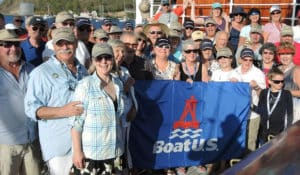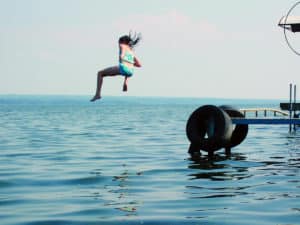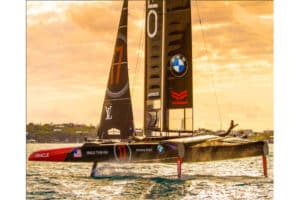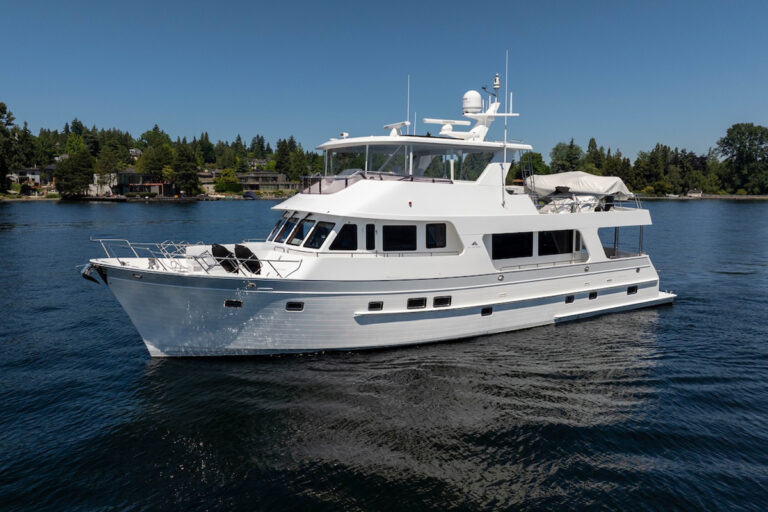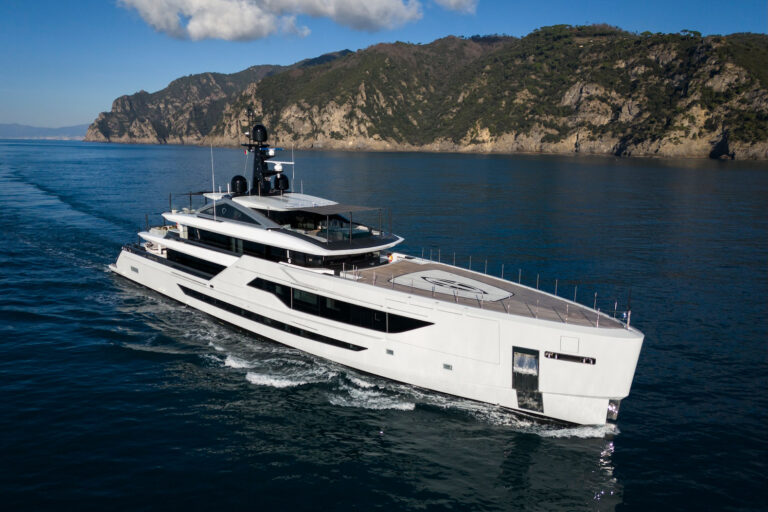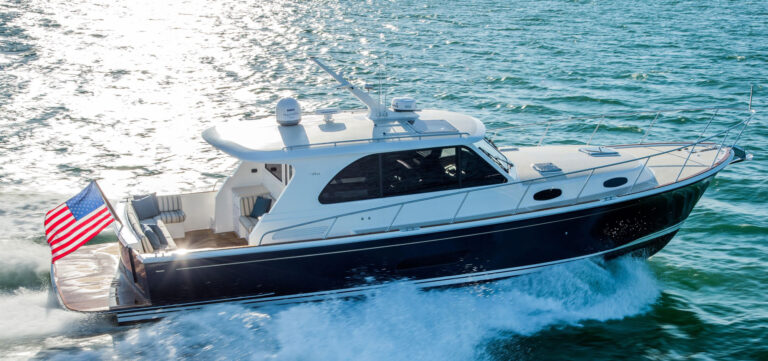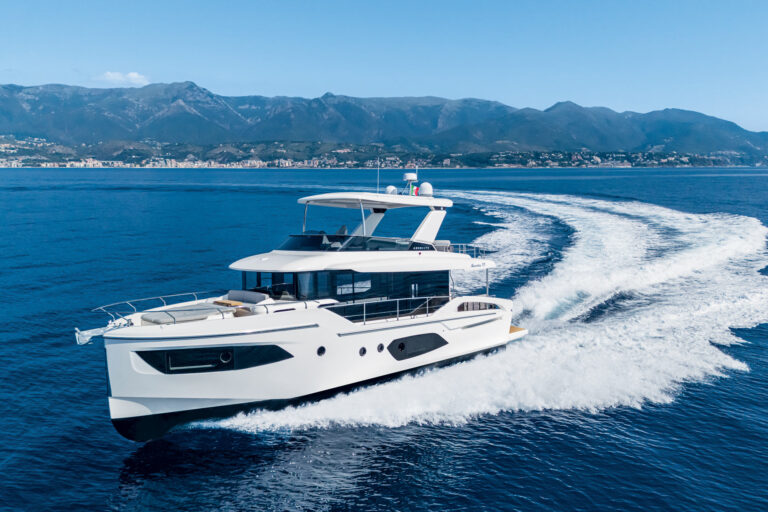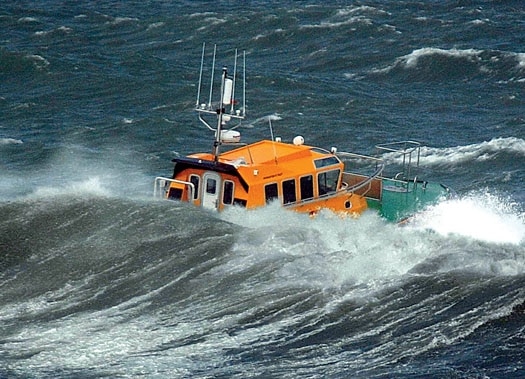
seamandrogue1.jpg
It had been a wild day on the water, working our way up the North Coast of Cornwall on the southwest tip of England. It was blowing close to a gale from the northwest, which meant that there was no shelter along this bleak and rocky coastline. The boat was only a 37-footer, but it was quite a special one: the prototype of a new design of selfrighting lifeboat. It was slow, only capable of nine knots, but it was designed to operate in all weather conditions. Which explains why we were out at sea on such an extreme day. Someone has to test a prototype, and that was my job.
One of the problems with driving an all-weather lifeboat is that you don’t have any excuse not to go to sea. You may look at the forecast to see what is coming but you can’t turn round and say that the conditions are too bad. The lifeboat is designed to go to sea when the prudent seaman stays in harbor and so there we were, inching our way along a wild coastline where the next land to windward was America.
Already along the way we had been called on to make a search for a fisherman who was reported to have been washed off some rocks. This delayed us for a couple of hours. The delay was quite critical because it meant that we would get to our destination later that expected, just as it was getting dark and the ebb tide would be running over The Doom Bar.
Padstow, our destination, is a small fishing port that lies in the Estuary of the River Camel, but to get there we had to cross the aforementioned Doom Bar, which is aptly named and no place to be in those adverse conditions.
But then we were in a lifeboat and there were no excuses, were there?
Still the name, Doom Bar, says it all. In good conditions and with the flood tide it poses no problem; the channel is marked by buoys and there is adequate water at high tide. However, the delay we had experienced had changed things and the conditions we could expect were likely to be far from good. First, there would be an ebb tide running out when we arrived at the bar. Second, there was this northwesterly gale blowing straight into the entrance against the tide. And third, it was getting dark, so it would be more difficult to pick out the channel buoys. The final straw was that with the ebb tide, the depth on the bar was reducing, sucking out to add breaking waves to the maelstrom. All the ingredients for a rough ride were coming together in one place.
It was going to be a wild ride. With the wind against the tide I could expect a wild confusion of heavy breaking seas coming in behind. With our modest speed these breaking crests would be overtaking us; combined with the shallow water on the bar, this suggested that there was a strong risk of broaching and capsizing. OK, we were in a self-righting lifeboat, but in the confines of a narrow channel there is not much time for a second chance before you get washed ashore where the boat will not self-right. Not to mention a self-righting lifeboat also needs a self-righting crew.
We could have stayed out at sea and waited for the conditions to improve in the morning. Not only was that not a very appealing prospect, but it went against the spirit of the test. Besides which, we had a secret weapon on board that in theory should allow us to survive the ordeal: a drogue, which these slow lifeboats carry for use in just these conditions.
As we approached the Doom Bar the crew got the drogue and its ropes ready on the stern. Once we had sighted the Fairway Buoy it was time to deploy.
I knew the theory of using a drogue. You tow this conical-shaped heavy canvas thing astern and the heavy pull it exerts on the stern of the boat helps to stabilize the steering. You should have full control with virtually no risk of broaching. It is important to get the right amount of drogue line out, usually a couple of wavelengths astern, so that the drogue does not pull out of the water at a critical moment.
The pull of the drogue is immense. On the 30-inch drogue we were using the pull can be up to three tons. So you need a strong attachment point and the fairlead for the drogue should be as close to the stern as possible. Also, to be fully effective, the boat should be a doubleender and not have a wide transom (not much help for sportfishing yachts, the most likely to be caught outside a breaking inlet). With a transom stern, the impact of the following waves hitting a slow boat could be quite severe and lead to damage.
Now for the real test. If things did not work properly we could end up dead, so you can imagine the air of tension on board as we streamed the drogue and headed for the heavy breaking seas on the Doom Bar. This entrance has an evil reputation and we were about to challenge it in very severe conditions. As the drogue went out and started to exert its magical pull, I could feel the difference immediately. Suddenly I had full steering control in the following seas and it was very reassuring, almost as though there was a third hand on the wheel helping me along. It was akin to a religious experience and you can see why the seamen of old believed in prayer.
I am not against prayer, but do keep full power on when towing a drogue so that you get the maximum pull on the stern. You cannot afford to chicken out and slow down once you are committed; otherwise you could be in serious trouble. So it was full tilt for us, into huge breaking waves. When the first one reared up astern we all held our breath. This was the moment of the truth, the moment of life or death. Our lives hung on that piece of rope trailing out astern. The wave broke over the stern in a mess of white water, but the rope held firm, the boat kept its course straight and true.
There were many more breaking waves like that, many of them bigger and wilder, but we survived them all. Most of the time it seemed that we were under water, but the boat came through, the channel buoys came up on schedule, and then there was the sheer bliss of the calm water inside. Never have I felt such relief, never have I felt so exhausted. But this was combined with a feeling of elation, the feeling that comes from having taken on a life or death challenge-and having won.
Now for caveats: A drogue can work magic but despite what textbooks might say they are not the solution for the average boat when running an inlet or crossing a bar. First of all, a drogue has to be immensely strong to stand up to the stresses involved; they’re big things, on the average boat there will just not be space to stow it. Second, drogues are only for use on displacement boats. On a planing boat you use your speed and power to negotiate your position in relation to the waves and you can power your way out of trouble (although in those conditions on the Doom Bar I would not have chanced a planing boat). Finally, on something like a wide trawler yacht with a wide transom, drogues are unlikely to offer the benefits promised, as the breaking waves impact on the transom.
And please do not mix up drogues and sea anchors. Drogues are for towing in heavy following seas, sea anchors are for putting out from the bow to keep it head to the waves in rough conditions when you just want to heave-to. As for the old remedy of using oil to reduce the chance of waves breaking, I have tried this once. You need a lot of oil to do any good and then the whole boat gets covered and the decks are treacherous. You can also get hit with a fine by the Coast Guard for pollution.

